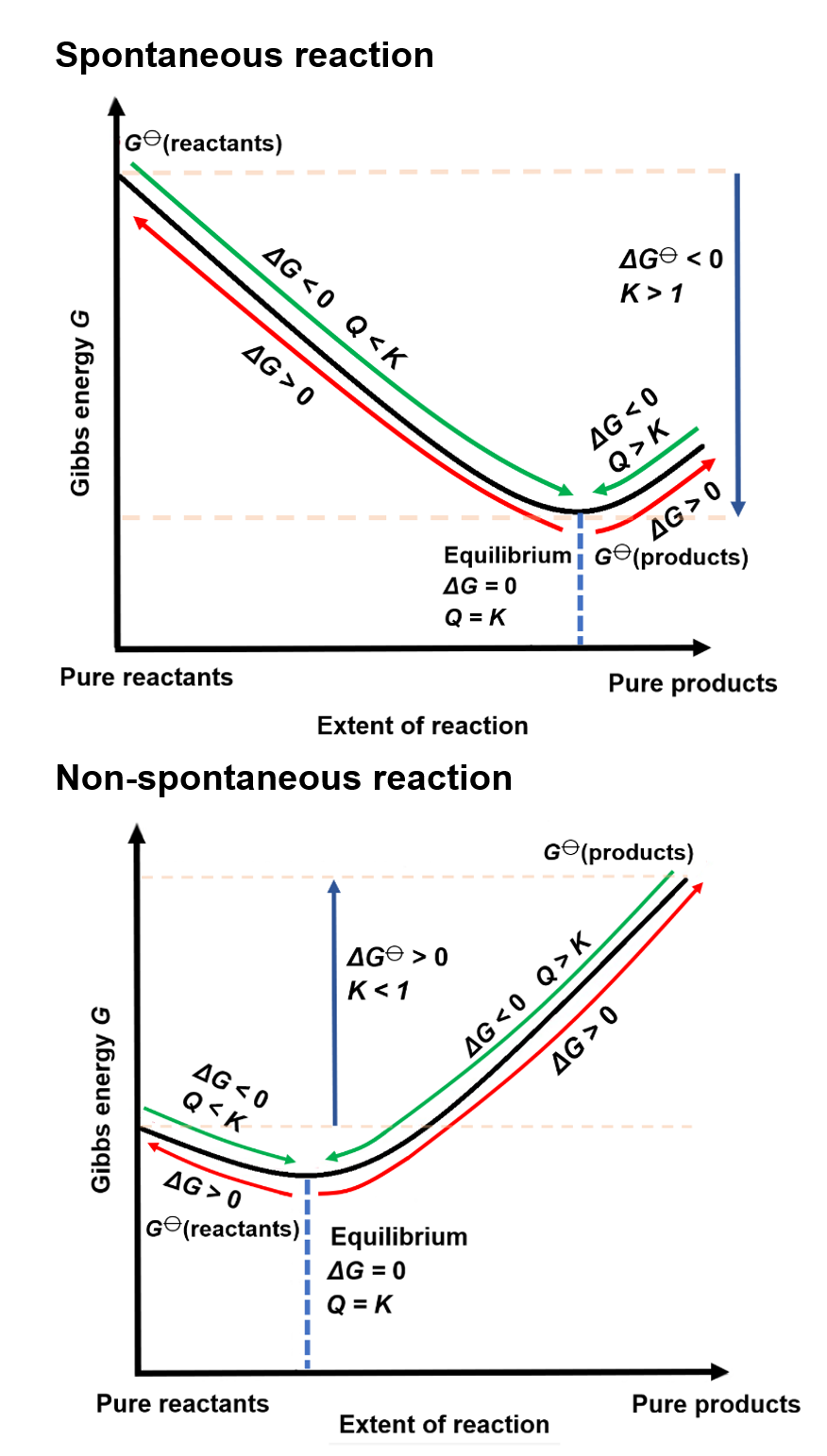Gibbs Free Energy, Equilibrium, and Spontaneity
$ΔG$ and Reaction Progress
- As discussed in the previous sections, Gibbs free energy ($ \Delta G $) is a thermodynamic quantity that helps us predict whether a reaction is spontaneous under constant pressure and temperature.
- A reaction is spontaneous if $ \Delta G $ is negative, meaning it can proceed without external energy input.
- However, as a reaction progresses, the concentrations of reactants and products change, and so does $ \Delta G $.
- At the start of a reaction, $ \Delta G $ is often negative, favoring the forward reaction.
- As the reaction progresses, $ \Delta G $ becomes less negative as the system approaches equilibrium.
- At equilibrium, $ \Delta G = 0 $. At this point, there is no net change in the concentrations of reactants and products because the forward and reverse reactions occur at the same rate.
- Consider the Haber process: $$ \text{N}_2(g) + 3\text{H}_2(g) \leftrightharpoons 2\text{NH}_3(g) $$
- Initially, $ \Delta G $ is negative, so the formation of ammonia ($ \text{NH}_3 $) is spontaneous.
- As more ammonia is produced, $ \Delta G $ becomes less negative until equilibrium is reached, at which point $ \Delta G = 0 $.
At equilibrium, the system’s Gibbs free energy is at its minimum, representing a state of maximum stability.

The Relationship Between ΔG and the Equilibrium Constant (K)
- At equilibrium, the concentrations of products and reactants form a constant ratio, defined as the equilibrium constant ($ K $).
- The relationship between $ \Delta G $ and $ K $ is expressed by the equation: $$ \Delta G^\circ = -RT \ln K $$ where:
- $ \Delta G^\circ $: Standard Gibbs free energy change ($kJ \, mol^{-1}$) under standard conditions.
- $ R $: Gas constant ($ 8.31 \, \text{J mol}^{-1} \, \text{K}^{-1} $).
- $ T $: Temperature in Kelvin (K).
- $ K $: Equilibrium constant (unitless).
Equilibrium constant $K$ will covered in Reactivity 2.3.
This equation links the thermodynamic favorability of a reaction (as indicated by $ \Delta G^\circ $) to the position of equilibrium (as characterized by $ K $).
Key Insights:
- If $ \Delta G^\circ < 0$:
- The reaction favors products at equilibrium ($ K > 0$)
- If $ \Delta G^\circ > 0 $:
- The reaction favors reactants at equilibrium ($ K <0$)
- If $\Delta G^\circ = 0 $:
- Neither reactants nor products are favored ($ K = 1 $).




